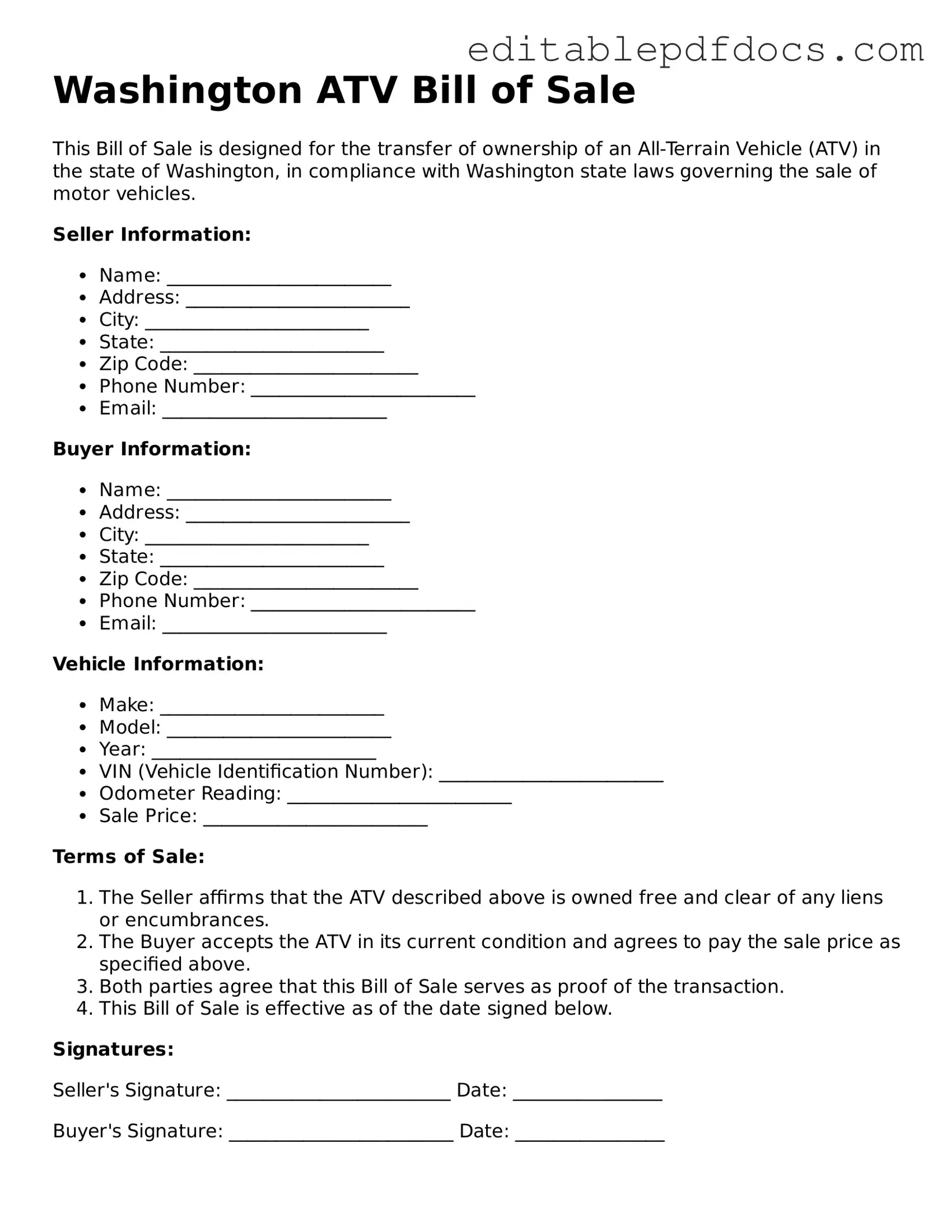Filling out the Washington ATV Bill of Sale form can seem straightforward, but there are common mistakes that people often make. One frequent error is failing to provide accurate vehicle information. This includes details like the Vehicle Identification Number (VIN), make, model, and year. Missing or incorrect information can lead to complications when registering the ATV.
Another common mistake is not including the correct sale price. The sale price should reflect the actual amount paid for the ATV. If the price is too low or not clearly stated, it can raise questions during the registration process and may even lead to tax issues.
People sometimes forget to include the seller's and buyer's information. This includes names, addresses, and contact information. Incomplete details can cause delays in processing the sale and may create confusion about ownership.
Not signing the form is another mistake that can invalidate the sale. Both the seller and the buyer must sign the Bill of Sale for it to be legally binding. Without signatures, the document does not serve its purpose.
Some individuals neglect to date the form. A date is crucial as it establishes when the sale took place. Without a date, it can be challenging to prove the transaction's timing, which is important for tax and registration purposes.
People often overlook the importance of providing a clear description of the ATV's condition. If the condition is not accurately described, it can lead to disputes later on. Buyers have a right to know what they are purchasing.
Another mistake is failing to keep a copy of the completed Bill of Sale. Both parties should retain a copy for their records. This document serves as proof of the transaction and can be useful in case of future disputes or questions about ownership.
Lastly, some individuals may not check for additional requirements specific to their county or city. Local regulations may impose extra steps or documentation needed for the sale. It is important to be aware of these to ensure a smooth transaction.
